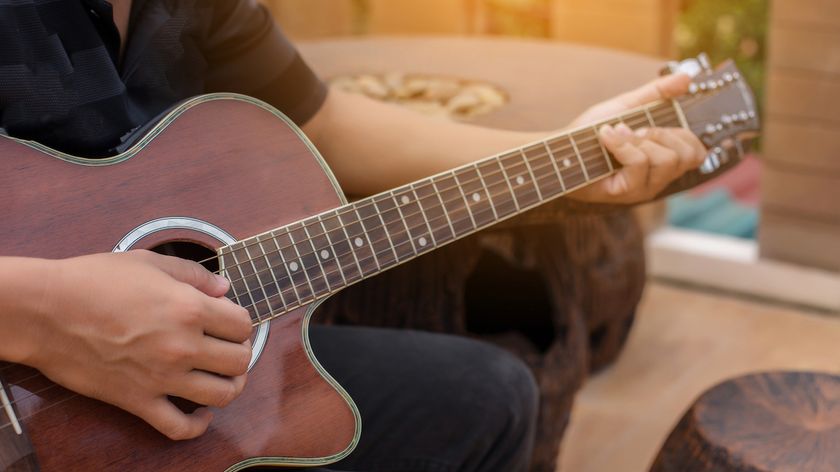Effective Ways to Warm Up Both Hands
One of the toughest things for me to do while traveling constantly is to find time to warm up quickly and effectively. I have devised a few different techniques over the years that have proven invaluable to me and which I’d like to share with you this month.
Two of the most common phrasing patterns I find myself using are either arpeggio sequences, wherein long lines are formed from playing one note per string across groups of strings, or chromatic lines, wherein a series of notes are played in succession on one string. In the two exercises presented here, both approaches are employed. Use alternate picking throughout, and strive for clarity and cleanliness in the articulation of each note. Once you have a handle on this, you can try incorporating economy picking, which is my picking preference when crossing strings.
FIGURES 1 and 2 are exercises that I visualize purely for their symmetry, with “reverse diagonals” played across the strings alternating with chromatic notes on one string. FIGURE 1 begins with the pinkie on the high E string’s 15th fret, the ring finger on the 14th fret of the B string, the middle finger on the 13th fret of the G and the index finger on the 12th fret of the D. On beat two, I “walk up” the D string chromatically (one fret at a time) with each fretting finger until the pinkie is at the 15th fret, after which I reverse the diagonal and move one note per string back up to the high E. On beat three into beat four, I chromatically ascend the high E back up to the 15th fret, after which the first shape is repeated. The pattern then moves down one string and is repeated three times, and then I change direction and move back up.
When you get back to the very beginning of the phrase, a neat twist is to move down
one fret and repeat the entire sequence, as I do in FIGURE2. As performed on a seven-
string, the lick becomes even longer than it would be on a six-string.
- Now that you have the idea, try mov- ing similar ideas around the fretboard in
- as many different ways as you can devise. You’ll find that exercises like this will keep your chops in shape, whether you’re about to walk out onstage or are preparing to record a solo.
Get The Pick Newsletter
All the latest guitar news, interviews, lessons, reviews, deals and more, direct to your inbox!

"Upgrading from your entry-level acoustic opens the door to an entirely new world of tonewoods, body shapes, and brands": 6 signs it's time to upgrade from your first acoustic guitar

"I'm past my prime": 5 common excuses for not learning the guitar – and 5 body and mind-boosting reasons you should

